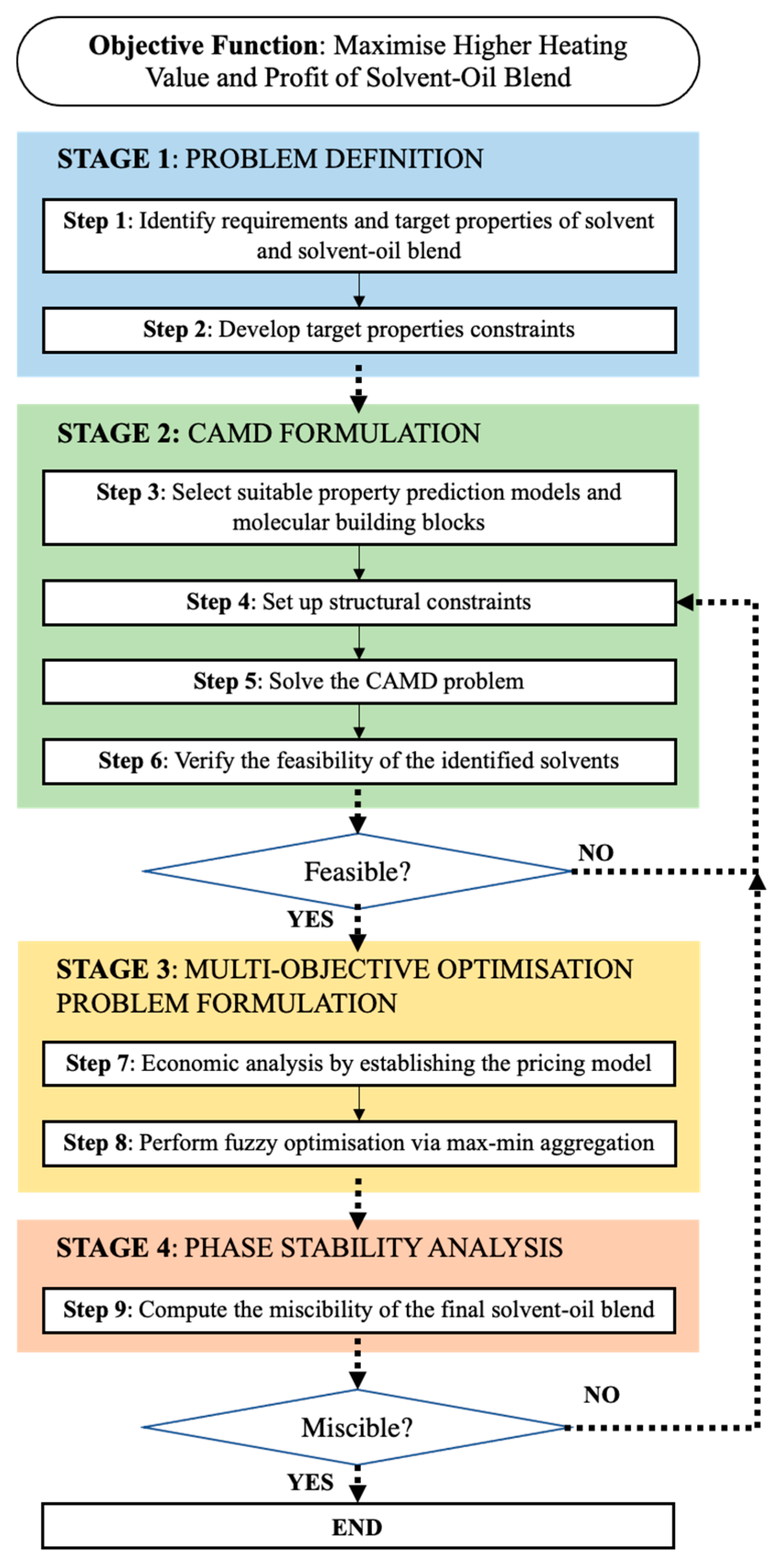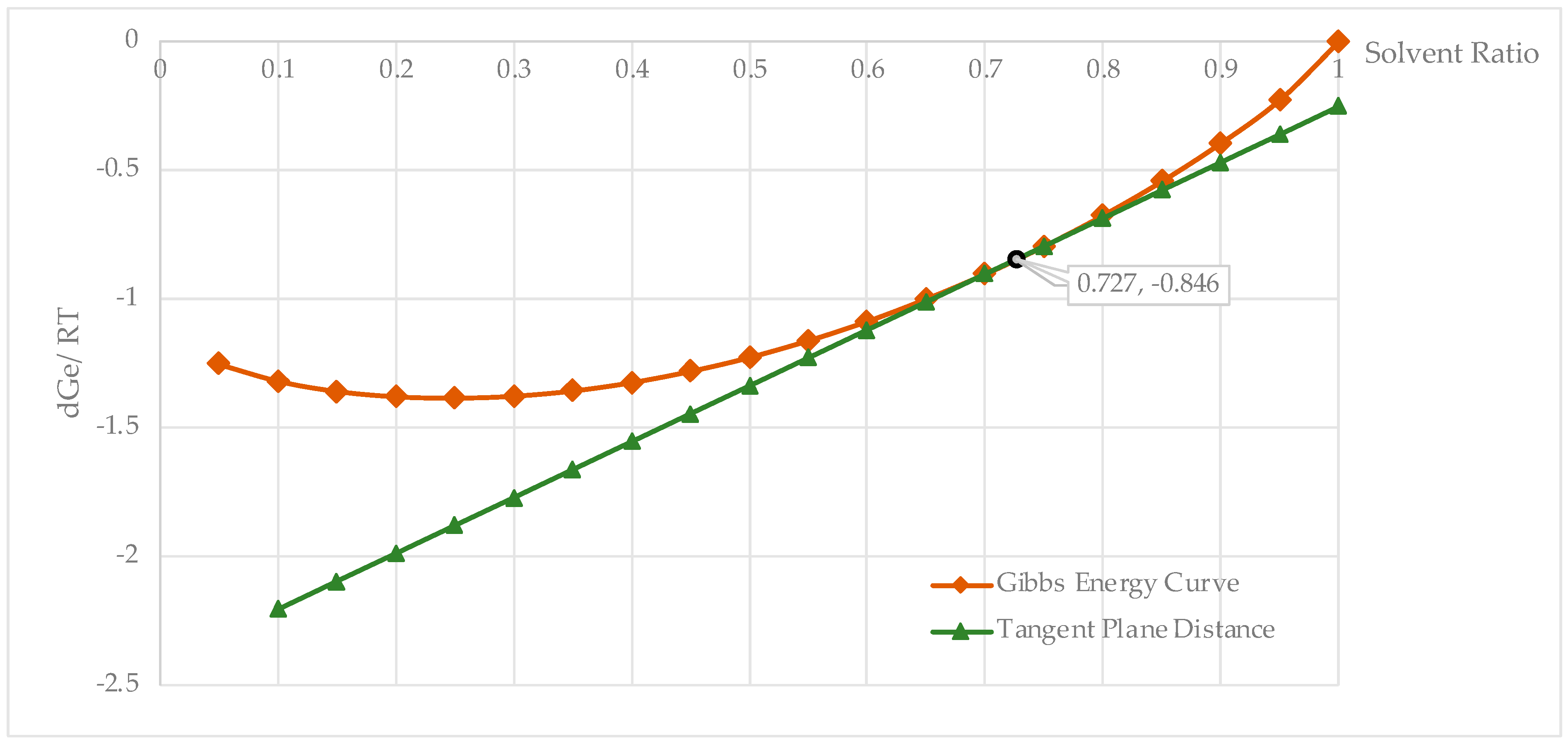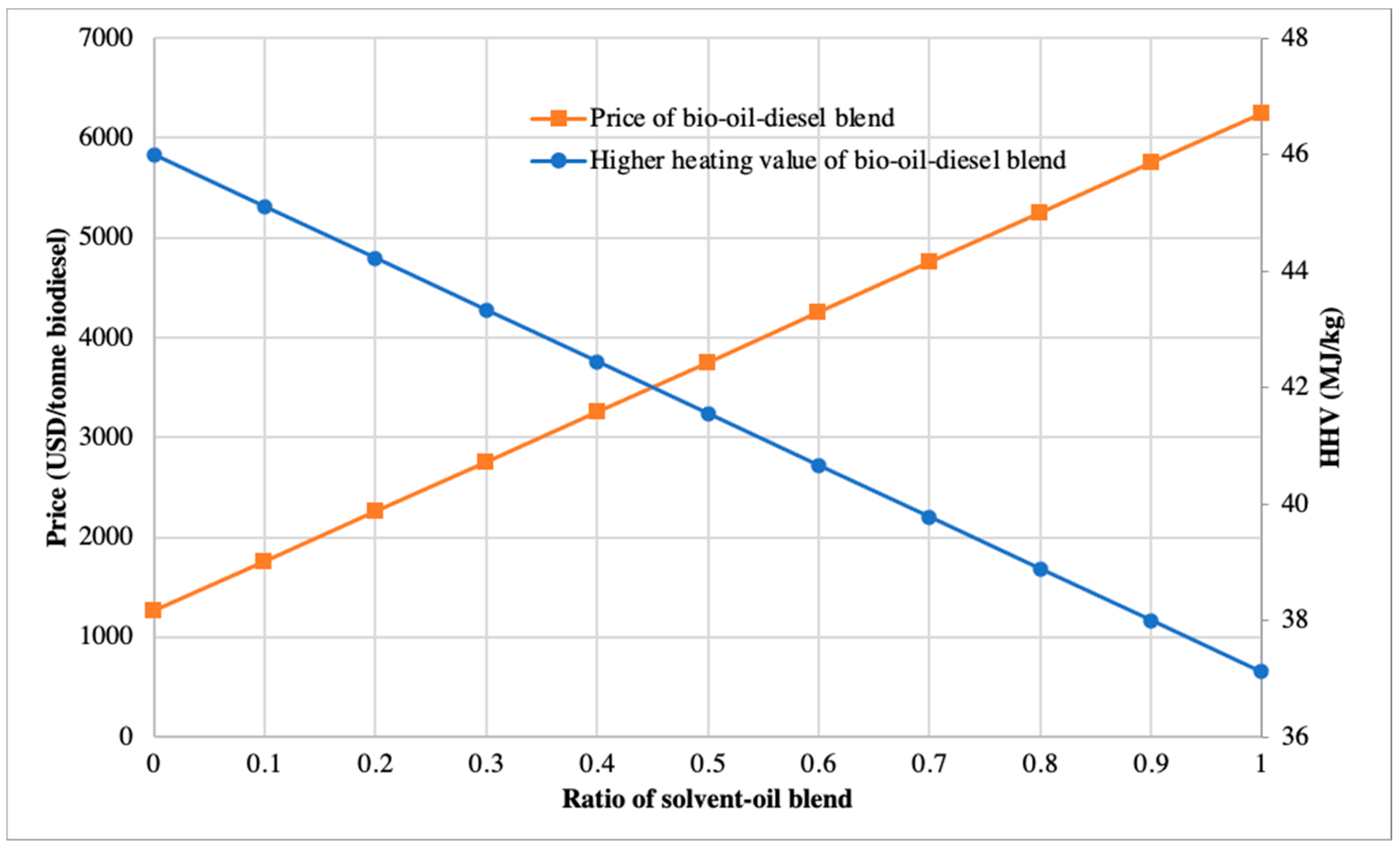1. Introduction
The conversion of lignocellulosic biomass material, also called second generation biomass, into usable intermediates has attracted the attention as a potential renewable energy source. While the extent of carbon neutrality of biomass is debatable, the need to study alternative fuels produced from biomass conversion is critical in response to fast depleting resources and the rising demand for sustainable development, as well as to counter volatilities in crude petroleum oil prices. Various methods including thermochemical and biochemical techniques can be employed to convert biomass into liquid fuels. Among the thermochemical methods, fast pyrolysis received great attention and has been successful in its commercialisation due to the high yield of the main product pyrolysis bio-oil. High-quality pyrolysis bio-oil can be applied in engines, turbines, boilers, and in some cases, qualified as hydrocarbon and transportation fuels, although further improvement is required of the properties and cost-efficiency of bio-oil [
1].
A pyrolysis bio-oil mixture is vaguely defined as one with water and oxygenated organic compounds, including carboxylic acids, aromatics, acetals, alcohols, aldehydes, esters, hemiacetals, olefins, phenolics, proteins, and sulphur compounds. The actual composition of a bio-oil is an intricate function of feedstock, oil production and purification techniques, a condensation system, and storage conditions [
2]. The direct use of pyrolysis bio-oil as a fossil fuel substitute suffers from several drawbacks such as low heating value, high water content, high viscosity, low miscibility, high acidity, as well as storage instability due to product aging. The properties of pyrolysis bio-oils differ for different feedstock sources and production parameters, but the products are generally of poor quality compared to conventional fuels. Upgrading technologies have been actively studied and implemented in the effort to upgrade bio-oil properties, such as catalytic cracking, emulsification, esterification, hydrodeoxygenation, hydrogenation, steam reforming, and the manipulation of supercritical fluids [
3]. Pidtasang et al. [
4] found that adding a small proportion of alcohol solvents to bio-oil could improve its heating value, stability, and viscosity, although the values still could not meet the quality of conventional gasoline and diesel. Organic solvents such as acetone, acetone-methanol, ethanol, isopropanol, and methanol were also used for bio-oil upgrading [
5].
The identification and selection of solvents often involve tedious experimentation through trial-and-error, and it could be time consuming to test all potential solvents and ineffective in optimising blend performance to meet the property targets. In response to these challenges, computer-aided molecular design (CAMD) techniques were commonly employed to identify potential candidates that satisfy a set of property targets and constraints in the design and optimisation of solvents [
6]. CAMD is a reverse engineering approach which predicts, estimates, and constructs molecules from a given set of molecular building blocks based on predefined target properties [
7]. To develop a CAMD framework, it is essential to have reliable property prediction models. One of the most widely used methods for the molecular property predictions is the Group Contribution (GC) methods [
8]. GC methods predict the property of a molecule by summing up the contributions from the molecular groups in the compound according to the frequency of their appearance in the structure [
8]. The ability of CAMD techniques to generate all possible non-intuitive solutions can be exploited to identify promising molecular structures for various applications. With these computer-aided methods, the search was focused on analysing the alternatives and rejecting infeasible solutions at the initial stages of the design process. The experiments were only performed during the final selection stage for verification.
In the past, the CAMD approach has been widely employed in solvent design problems for different applications [
9]. Detailed review articles from Austin et al. [
10] and Ng et al. [
11] discussed the solution techniques, applications, and future opportunities of the CAMD tools. In addition, Chemmangattuvalappil [
12] reviewed the recent development of CAMD applications in the design of solvents. Conventionally, the selection of solvents had formerly been tackled using a combination of fundamental physio-chemical knowledge, as well as heuristic and empirical approaches based on expert judgements. Using CAMD techniques, studies were able to identify solvents ranging from simple hydrocarbons such as methanol and ethanol [
13] to more complex mixtures such as the methanol,
N,N-dimethylformamide (DMF), and acetone blend [
14]. A comprehensive review on the process system engineering tools, such as CAMD and group contribution (GC) models, for the design of ionic liquids and integrated biorefineries was presented by Chemmangattuvalappil et al. [
15]. In one of the recent developments, CAMD tools were employed in a multi-objective optimisation (MOO) problem targeted at designing a green chemical product and integrated biorefinery process that incorporated green manufacturing while fulfilling the customer requirements [
16]. In addition, the CAMD approach was also integrated with the miscibility characteristics to predict possible structures that would form stable blends with bio-oil [
17,
18].
A major obstacle in the commercialisation of biofuels is their high production cost as compared to that of the conventional diesel fuel. Their low heating value and the high cost of raw materials make biofuels more costly for heat generation [
19]. As the biofuel ratio increases in the fuel, the fuel’s energy density decreases. Furthermore, the addition of solvents is often required to improve the biofuel’s properties. However, the solvents are generally associated with high cost as most of them are manufactured as specialty chemicals. This further increases the production cost of biofuels. Further, the existing and progressing biofuel legislative framework sparks the urge to assess the cost associated with upgrading bio-oil.
Various recent contributions have included the economic aspects such as product pricing, profitability, market share, and operating cost in the product design. In the design of a traditional Chinese medicinal supplement, customers’ preference on product quality and economic considerations was taken into account while developing the chemical product design framework [
20]. Zhang et al. [
21] provided an overview of chemical product design in the context of a multidisciplinary hierarchical framework including design issues such as project management, market study, economic analysis, product design, and process design. Moreover, an activated carbon production plant from industrial waste nutshells was proposed [
22]. In the plant design, an economic analysis was developed by considering the cost of the main equipment, the price of the raw materials, basic services, and operations. On the other hand, application of neural network approach is often reported in cost estimation and investment evaluation. A neural network growth model was proposed to estimate potential of investment in renewables in Japan by Jehan, and Sultonov [
23]. In addition to the existing growth model, the extended growth model considered both environmental risk diversion and risk mitigation. With the developed neural network-based approach, the establishment and operation of a renewable investment opportunity is possible. Further, an artificial neural network method was used to develop a cost estimation model for the tendering of engineering services [
24]. However, previous research on the design of bio-oil solvent mainly focused on the functionality of the solvent itself. It is also important to incorporate the economic aspects into the development of bio-oil solvent for the designed solvent-oil blend to be competitive with the conventional diesel fuel. Generally, the heating value of pyrolysis bio-oil increases with the addition of solvent. However, as the amount of solvent increases, the cost of solvent-oil blend increases as well, resulting in lower profitability. Thus, MOO approach was adapted in this work to investigate the trade-off between high heating value and high profitability of solvent-oil blend.
The weighted sum method is a more common approach for handling MOO problem. In weighted sum method, each objective function was allocated with a weighting factor to convert different objectives into an aggregated scalar objective function [
25]. However, in CAMD problem, the weighting factor of each objective is not always definable. In most cases, the relative importance of each objective is fuzzy or uncertain. In addition, these objectives might be contradictory to each other in nature [
26]. Thus, a fuzzy optimisation approach was employed in this study to solve the MOO problem under the fuzzy environment. Zadeh [
27] first established fuzzy set theory for decision making problems. Later, the fuzzy set theory was extended to address linear mathematical programming problems involving multiple objectives [
28]. Within the fuzzy optimisation algorithms, the trade-off between the objective functions to be optimised can be identified by introducing the fuzzy membership function. As a result, an optimal compromised solution can be identified by achieving near optimality for all the objectives.
In the past, fuzzy optimisation approach has been applied in various CAMD applications. A systematic fuzzy optimisation-based method was developed to design molecules for chemical processes with both property superiority and robustness optimised [
26]. Khor et al. [
29] adapted the fuzzy optimisation via max-min aggregation in the CAMD of alternative solvents for oil extraction from palm pressed fibre. The developed approach was able to optimise the physical properties of the solvent simultaneously with the safety and health aspects. A similar approach was employed and extended with the introduction of disjunctive programming in the work by Ten et al. [
30] to design solvent for gas sweetening process. Recently, a max-min aggregation fuzzy optimisation approach was employed along with CAMD method in the design of green solvents for pyrolysis bio-oil upgrading with consideration of environmental, health and safety aspect while ensuring minimal compromise on the fuel functionality [
31]. The goal of this study is to design a solvent which is capable to enhance the properties of bio-oil with minimal addition of solvent via CAMD approach. Fuzzy optimisation approach was employed to investigate the trade-off between the functionality and profitability of the solvent-oil blend. With the developed methodology, the final solvent-oil blend should demonstrate promising property targets that fulfils the standards of biofuel while displaying desirable profit margin.












